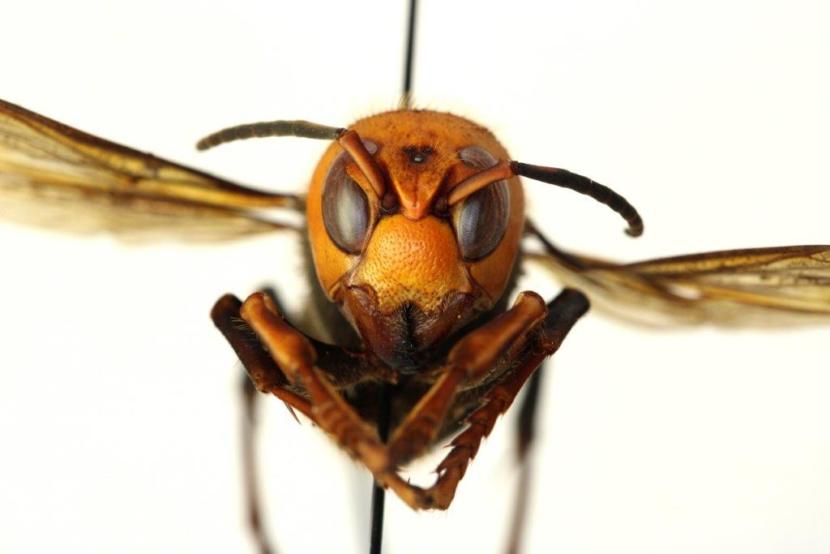
Authorities are working to track and kill an invasive species of Asian hornet given the sensationalist nickname “murder hornet” detected in British Columbia and Washington state.
Pictures of the Asian giant hornet are nothing short of terrifying. The face of the 2-inch insect looks malevolent. And it is: It preys on honey bees, capable of devouring colonies in a few hours. That said, unprovoked attacks on humans and livestock are rare.
But its sheer size and ability to sting through most beekeepers’ suits make it a formidable pest, and agricultural officials in the U.S. and Canada are working to make sure it doesn’t get established in North America.
Alaska isn’t known to be hospitable to outside species of insects. But University of Alaska Fairbanks entomologist Derek Sikes said he doesn’t see the Asian giant hornet adapting to Alaska’s cold climate, even though in some parts of the panhandle, the climate is fairly mild.
“So the question then becomes, what about Southeast Alaska, which is the warmest,” Sikes told CoastAlaska on Monday. “And there, that’s where it has the highest chance of succeeding, but even there it’s very small.”
Warming temperatures — brought on by global climate change — will only increase the chance of the insects’ ability to thrive in Alaska, he added.
Dubbed in recent days by some media outlets as so-called “murder hornets” — its northern range of habitat is in Russia’s far east and Japan.
“And that’s the same latitude as Washington and Oregon,” Sikes added.
Yet further north, two nests were discovered last fall on Vancouver Island in British Columbia.
“And those nests were eradicated,” said Gail Wallin, executive director of the Invasive Species Council of British Columbia. The nests were found last fall near the island city of Nanaimo — about 400 miles south of Ketchikan.
She told CoastAlaska on Monday that the origins of the nests remain a mystery. They could’ve arrived on cargo from Asia. Or they could’ve been imported by someone seeking an exotic pet.
Agricultural authorities in Washington state have confirmed sightings of the pest near Blaine close to the Canadian border.
Wallin said officials in British Columbia are working with neighboring states, provinces and territories to track and eliminate these and other invasive pests.
“The species don’t recognize any of the borders, so the more we can work together the better off we are,” she said.
The Centers for Disease Control and Prevention cites 1,109 deaths by hornet, wasp and bee stings between 2000 and 2017. The last two recorded fatal stings in Alaska were both near Fairbanks in 2006.
